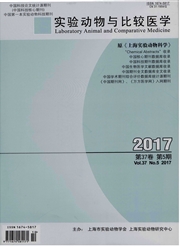

 中文摘要:
中文摘要:
目的 探索常温条件下附睾尾运输的最佳条件,并消除培养液对常温运输可能存在的影响.方法 对附睾尾的运输方法进行了改良,同时比较了常温或4~8℃条件下,在20μ1或0 μ1培养液M2中,运输后精子的活力、受精能力及其胚胎发育能力.结果 结果表明,常温运输不加培养液的条件下,运输的附睾尾精子活动率和活力,均优于20 μl培养液中运输的附睾尾,但是稍差于4~8℃条件下20μ1M2培养液中运输的附睾尾.结论 无液体运输的方式更加适合于附睾尾的常温运输,同时该方法还可消除培养液对附睾精子可能存在的不良影响;常温附睾尾的运输对于小鼠资源库或者研究机构间珍贵小鼠品系的运输具有重要的应用价值.
 英文摘要:
英文摘要:
Objective To explore the optimal conditions for Cauda epididymis transport under room temperature and eliminate the effect of medium on the transport of cauda epididymides at room temperature. Methods The transport methods of cauda epididymides were modified in this study and the sperm motilities, fertility and developmental abilities of IVF embryos after transportation at room temperatures or 4-8℃ in 20 p.1 of medium M2 or medium-free tube were compared. Results Under room temperatures, delivery of cauda epididymides without medium was significantly superior to with medium, but was inferior to 20 μl M2 medium under 4-8℃. Conclusion The modified medium-free system was beneficial to room temperature transportation of cauda epididymides and maybe eliminate the side effects of medium on spermatozoa, and the delivery of cauda epididymides under room temperature was useful for transporting some valuable strains between mouse banks and research facilities.
 同期刊论文项目
同期刊论文项目
 同项目期刊论文
同项目期刊论文
 Generation of hypoxanthine phosphoribosyltransferase gene knockout rabbits by homologous recombinati
Generation of hypoxanthine phosphoribosyltransferase gene knockout rabbits by homologous recombinati The Oct4 promoter-EGFP transgenic rabbit: a new model for monitoring the pluripotency of rabbit stem
The Oct4 promoter-EGFP transgenic rabbit: a new model for monitoring the pluripotency of rabbit stem A comprehensive method for the conservation of mouse strains combining natural breeding, sperm cryop
A comprehensive method for the conservation of mouse strains combining natural breeding, sperm cryop 期刊信息
期刊信息
